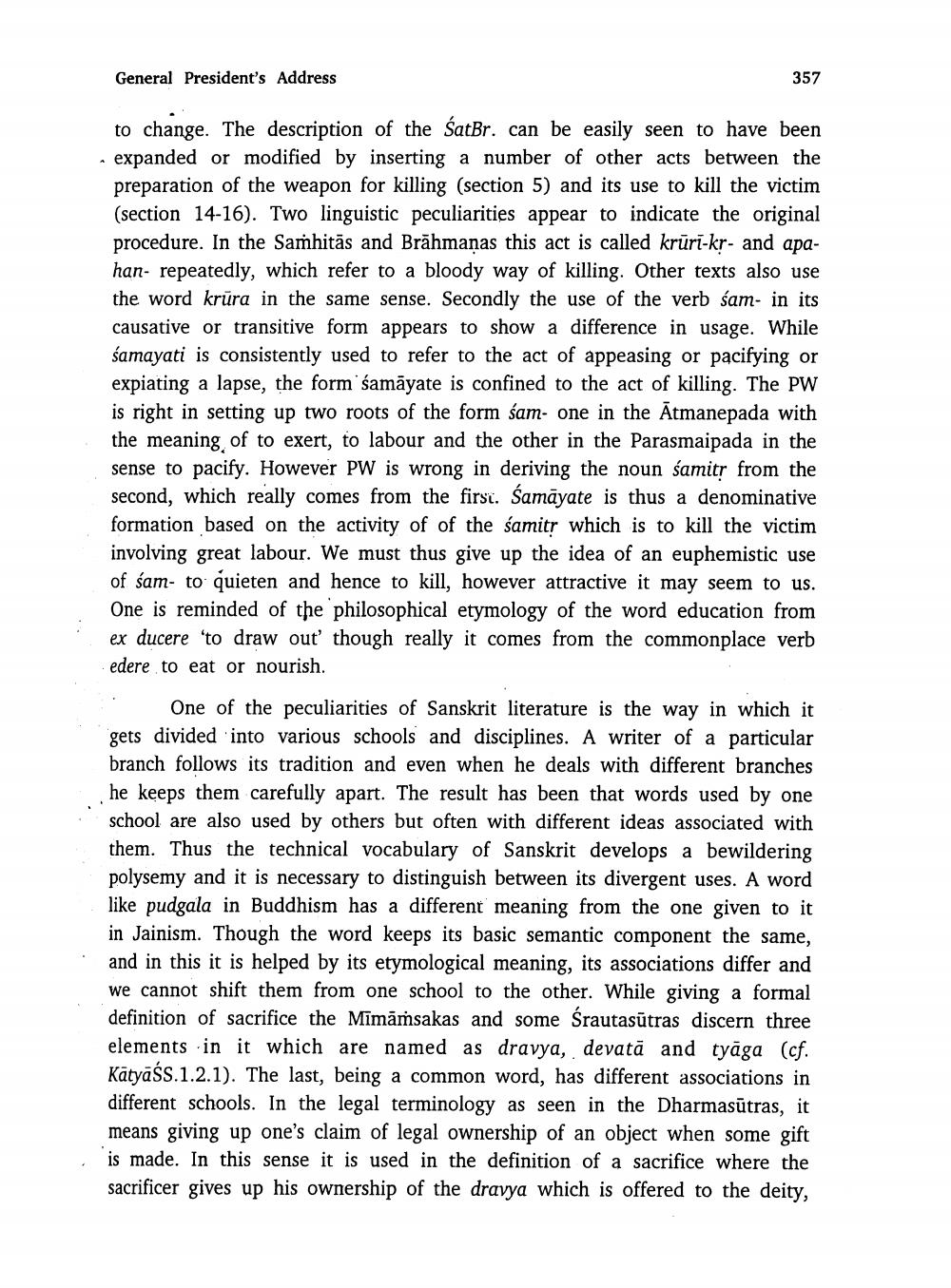________________
General President's Address
357
to change. The description of the SatBr. can be easily seen to have been expanded or modified by inserting a number of other acts between the preparation of the weapon for killing (section 5) and its use to kill the victim (section 14-16). Two linguistic peculiarities appear to indicate the original procedure. In the Samhitās and Brāhmaṇas this act is called krūrī-kr- and apahan- repeatedly, which refer to a bloody way of killing. Other texts also use the word krūra in the same sense. Secondly the use of the verb sam- in its causative or transitive form appears to show a difference in usage. While samayati is consistently used to refer to the act of appeasing or pacifying or expiating a lapse, the form śamāyate is confined to the act of killing. The PW is right in setting up two roots of the form sam- one in the Atmanepada with the meaning of to exert, to labour and the other in the Parasmaipada in the sense to pacify. However PW is wrong in deriving the noun samitr from the second, which really comes from the first. Samāyate is thus a denominative formation based on the activity of of the samity which is to kill the victim involving great labour. We must thus give up the idea of an euphemistic use of sam- to quieten and hence to kill, however attractive it may seem to us. One is reminded of the philosophical etymology of the word education from ex ducere 'to draw out' though really it comes from the commonplace verb edere to eat or nourish.
One
One of the peculiarities of Sanskrit literature is the way in which it gets divided into various schools and disciplines. A writer of a particular branch follows its tradition and even when he deals with different branches he keeps them carefully apart. The result has been that words used by one school are also used by others but often with different ideas associated with them. Thus the technical vocabulary of Sanskrit develops a bewildering polysemy and it is necessary to distinguish between its divergent uses. A word like pudgala in Buddhism has a different meaning from the one given to it in Jainism. Though the word keeps its basic semantic component the same, and in this it is helped by its etymological meaning, its associations differ and we cannot shift them from one school to the other. While giving a formal definition of sacrifice the Mīmāṁsakas and some srautasūtras discern three elements in it which are named as dravya, devatā and tyāga (cf. Katya Śs.1.2.1). The last, being a common word, has different associations in different schools. In the legal terminology as seen in the Dharmasūtras, it means giving up one's claim of legal ownership of an object when some gift is made. In this sense it is used in the definition of a sacrifice where the sacrificer gives up his ownership of the dravya which is offered to the deity,




